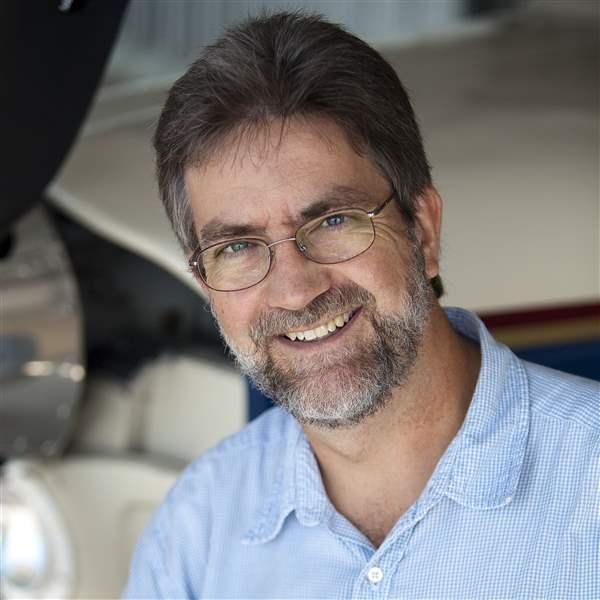Only the air conditioning gives it away
Looking out the left window, I see the left wing and one of the airplane's two Pratt and Whitney PT-6A turboprop engines. It whines contentedly. Control forces are somewhat heavier than with a training aircraft, especially in roll, but that's to be expected--this is an airplane with a maximum takeoff weight of 12,500 pounds, about four times that of a Cessna 172.
After an uneventful single-engine landing--I did mention the engine failure, didn't I?--flight instructor Jim Doran turns to me and asks, "Would you like to fly something else?" I consider a list of some 18 different airplanes, and select the Socata Trinidad--a comfortable single-engine retractable that I haven't flown in several years. A few strokes on a computer keyboard, and I'm sitting in the left seat of a Trinidad at a mountainous Colorado airport.
Actually, I'm not sitting in an aircraft at all. I'm sitting in an Alsim AL200 MCC, a fixed-base multicrew flight training device at Andrews University in Barrien Springs, Michigan (see "Training Notes and News," July AOPA Flight Training). It can be quickly reconfigured to simulate a variety of piston singles and twins, twin-engine turboprops, and even light jets.
It's the first U.S. installation for Alsim, a simulator manufacturer founded in France in 1994 by an airline pilot and a computer engineer. The company pioneered the use of flat-panel computer screens to display cockpit instruments. In addition to being rapidly reconfigurable to represent different aircraft, its flight training devices provide authentic feedback of flight-control forces.
And the AL200 MCC, designed for use with two-pilot crews, is effective. Its 180-degree field of view wraps around the pilot, and the visuals are so realistic, you quickly forget that the simulator is fixed to the floor of the university's modern simulation center. A single-engine approach to minimums will have you sweating as much as if you were flying a full-motion sim--the air conditioning's cool, dry replacement of southwestern Michigan's hot, humid summer air is the primary clue that you're not in a real airplane today.
Doran is chief flight instructor at the 3,200-student university, which has about 85 flight students. The university also installed an Alsim Cessna 172 Garmin G1000 glass-cockpit trainer. Andrews students move on to do all types of flying, from airline and corporate to missionary flying, he said.
By having students complete some of their training in the new simulators, Andrews hopes to reduce the size of its training aircraft fleet. The university is owned by the Seventh-Day Adventist Church, which requires higher liability insurance limits than most flight schools, Doran explained.
Andrews' Department of Aeronautics also offers a full maintenance training program, located in a facility adjacent to the flight program at the university's airport.
We hope you find our new Career Pilot section interesting (see p. 69). If you're considering, or preparing for, a flying career and you'll be anywhere near AOPA Expo 2007--which will be held October 4 through 6 in Hartford, Connecticut--you won't want to miss Career Pilot Live.
Wayne Phillips, AOPA Flight Training's careers columnist, will talk about flying careers, including strategies to help you land the flying job you want, as well as the current hiring outlook. Phillips will speak on Saturday, October 6, from 12:30 to 1:30 p.m. in Room 13 of the Connecticut Convention Center. Plan to join us, won't you?
E-mail Mike Collins, editor of AOPA Flight Training, at [email protected].



